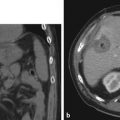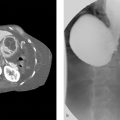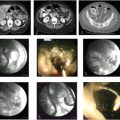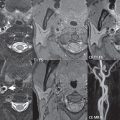2 Minor and Major Complications
2.1 Definition and Reporting System of Complications
Interventional radiology (IR) provides a wide variety of vascular, non-vascular, musculoskeletal, and oncologic minimally invasive techniques that are aimed at therapy or palliation of a broad spectrum of pathological conditions. Outcome data for these techniques are globally evaluated by hospitals, insurance companies, and government agencies targeting a high-quality health care policy, including reimbursement strategies. To analyze effectively the outcome of a technique, accurate reporting of complications is necessary. Throughout the literature, numerous classification systems for grading complications have been reported. Until now, there has been no method for uniform reporting of complications both in terms of definition and grading. In 2017 a document was developed by CIRSE called the CIRSE guideline with an aim to a classification system of complications based on combining outcome and severity of sequelae. CIRSE also developed a patient safety checklist, the use of which is of paramount importance. Using the CIRSE patient safety checklist to ensure practice of homogeneity among different individuals and departments is essential in all IR procedures. In a similar way, reviewing and grading complications should be performed in terms of a uniform and accurate reproducible and validated categorization system.
Only by using a safety checklist, there is a 36% decrease of major complications and postsurgical mortality rates. The Society of Interventional Radiology distinguishes minor and major complications. The definitions of these complications are as follows:
Minor complication: Treatment-related adverse event requiring nominal therapy or no treatment with or without overnight hospitalization for observation.
No therapy, no consequence.
Nominal therapy, no consequence; includes overnight admission for observation only.
Major complication: Treatment-related adverse event requiring further therapy with increase in the level of care or prolonged hospitalization.
Require therapy, minor hospitalization (< 48 hours).
Require major therapy, unplanned increase in level of care, prolonged hospitalization (> 48 hours).
Have permanent adverse sequelae.
Result in death.
The CIRSE classification system for complications is defined as follows:
Grade 1: Complication during the procedure that could be solved within the same session; no additional therapy, no postprocedure sequelae, no deviation from the normal post-therapeutic course.
Grade 2: Prolonged observation including overnight stay (as a deviation from the normal post-therapeutic course <48 hours); no additional postprocedure therapy, no postprocedure sequelae.
Grade 3: Additional postprocedure therapy or prolonged hospital stay (>48 hours) required; no postprocedure sequelae.
Grade 4: Complication causing permanent mild sequelae (resuming work and independent living).
Grade 5: Complication causing permanent severe sequelae (requiring ongoing assistance in daily life).
Grade 6: Death.
The main aspect for consideration is that a complication that can be treated during the same procedure should be stated as minor complication (grade 1), emphasizing the importance of complications’ management through interventionalists.
Further Reading
Filippiadis DK, Binkert C, Pellerin O, Hoffmann RT, Krajina A, Pereira PL. CIRSE Quality Assurance Document and Standards for Classification of Complications: The CIRSE Classification System. Cardiovasc Intervent Radiol. 2017; 40(8):1141–1146 Haynes AB, Weiser TG, Berry WR, et al. Safe Surgery Saves Lives Study Group. A surgical safety checklist to reduce morbidity and mortality in a global population. N Engl J Med. 2009; 360(5):491–499 Omary RA, Bettmann MA, Cardella JF, et al. Society of Interventional Radiology Standards of Practice Committee. Quality improvement guidelines for the reporting and archiving of interventional radiology procedures. J Vasc Interv Radiol. 2003; 14(9 Pt 2):S293–S2952.2 Avoiding Complications
Avoiding intervention confusion is concerned with special kinds of complications during interventional therapy: interventional therapy on the wrong body part, performing inadequate procedures, or engaging the wrong person. Engagement confusion is rare with regard to all performed procedures. When it occurs, however, the impact on the patient and the persons involved in the care process is momentous. Intervention confusion is generally considered preventable.
Therefore, the aim of the standard operating procedure (SOP) is to prevent confusion by effective implementation and consistent application of the following three complementary process steps while preparing each patient for endovascular interventions:
Preoperative verification process.
Marking the engagement location.
“Team-time-out” immediately before the start of the intervention.
To achieve success, it is important that all members of the pre- and perioperative teams are actively involved in the process and they effectively communicate with each other.
A patient safety checklist, knowledge of how to deal with impaired renal function, and allergic reaction to contrast media will help to minimize and avoid complications.
2.2.1 Patient Safety
“A good physician treats the disease. A great physician treats the patient who has the disease.”
—Sir William Osler.
This citation reflects the importance of taking the patient’s condition and existing comorbidities into account.
The aviation industry introduced safety checks before flying because of the many technical considerations that influence the safety of flight and the inability of the human mind to remember all the complex factors that require checking before flying. Air safety is such that there is a 1 in 3 million chance of an accident occurring in an airplane, as opposed to a 1 in 300 chance of an accident happening in a hospital. In 2009, Haynes et al published a surgical safety checklist in the New England Journal of Medicine , which was tested in eight centers worldwide. The use of the checklist resulted in a 36% decrease in postoperative complications and a 36% decrease in mortality after surgery. Use of surgical safety checklists have now become a standard practice throughout the world.
2.2.2 Patient Safety Checklist
Preparation of the patient according to the “CIRSE IR Patient Safety Checklist” is strictly recommended (Fig. 2‑1 ). These essential points will minimize communication and malinformation problems or any further confusion before starting the procedure. The CIRSE checklist might be adapted for dedicated, individual hospital-specific needs.

In addition, the following topics should be recognized:
Questions an interventional radiologist should ask before accepting procedures:
Is the procedure necessary?
Is the patient suitable for the procedure?
Will it help the patient?
What is the potential for harm?
Are there better alternatives?
If the IR procedure is not performed, will the patient suffer harm?
Items that can influence the competence or performance continuum:
Define the scope of IR practice by local hospital conditions, support services and current experience.
Consult with peers in regard to complex cases.
Recognize when further investigation or observation is necessary.
Know your limitations and call for help when required.
Refer patients with complex problems beyond your experience to expert centers.
Participate in audit and risk management.
Participate in analysis of adverse events.
Steps to prevent harm:
Use a safety checklist.
Mark the operative site.
Involve the patient in the decision-making process (informed consent).
Make arrangements for appropriate proctoring for new procedures and technology.
Reduce distractions from pagers and telephone calls in the laboratory.
Maintain a distraction-free environment for everyone.
Know your limitations in terms of individual and system limitations.
Stay updated, free articles. Join our Telegram channel

Full access? Get Clinical Tree








